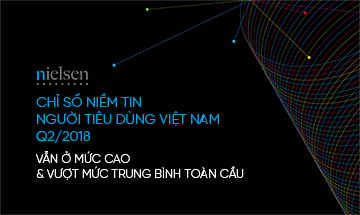


Make people SEE and REMEMBER the brand



Get people to UNDERSTAND and
WANT the brand



Change people's BEHAVIOR and
get them to CONVERT



Take care of people to CONVERT OFTEN and
ADVOCATE the brand
U News
[Content Marketing] The 6 STEPPS To Viral Content

Let’s talk about the holy grail of online marketing: the viral article or video. You’ll see a lot of different types of viral videos, from the wildly funny to the provocatively offensive to the profoundly sad. In this article, we’re going to look at some of the characteristics that viral content shares, no matter what the subject matter. STEPPS is the acronym of the following six characteristics.
Social Currency
Social currency is the idea that an individual’s social status is tied to the information he or she controls. Information that increases a person’s uniqueness, especially in conversation, is highly sought after and readily transmitted.
It’s possible to manufacture social currency. By creating novel and interesting content, we create the next trend that our consumers have to share with their friends. Take a look at the “Will It Blend?” series of videos where blenders are used to blend everything from golf balls to iPhones. This is an example of social currency, because it doesn’t have any real value except that I can send it to my friends and seem like I found a little treasure.
Triggers
Triggers are words, phrases, or images closely tied to a message. For example, I say “melts in your mouth,” your mind immediately finishes the phrase and thinks of M&Ms. Manufacturing triggers is possible if we keep our message and trigger on top of mind and tip of tongue for an extended period of time. Of note are indirect triggers; I say peanut butter, and you think jelly, or more relevantly, I say “Gangnam Style” and, hopefully, you think pistachios. Brands should work to establish triggers using viral content, so that when the trigger occurs, for example, my friend tells me about a cool new video that they just saw, I can say, “Oh, that reminds me of this.” If you’ve created triggers like this, your content will be shared, too.
Emotion
People share things they care about. Awe is the most heavily-shared emotion, but in general, any high-arousal emotion has a higher tendency for sharing. Sadness, on the other hand, prevents sharing. A good example of emotion that went viral is the KONY video. We knew we couldn’t do anything to stop Kony, but we were moved to spread the word about him.
Public
Content that’s “built to show” is “built to grow.” If there’s any reason why a user might avoid sharing a piece of content, whether it’s language choice, content, or otherwise inappropriate, this can significantly impact sharing behavior on a large scale. On the other hand, movements that are naturally public, like Movember and the yellow Liveh3 bracelet, tend to spread faster. Can you start a viral craze with an idea that’s built to show?
Practical Value
People share “news you can use,” like useful, practical advice. People enjoy helping others; it creates a h3er social bond between us by letting the other person know that we care. It’s important to note how we package our practical value advice: it should be tidbits, a paragraph or two at most, rather than a dissertation.
Stories
Finally, information travels under the guise of idle chatter. When your brand exists in a story that can’t be told without the brand, and when that story shares well in chatting, you’ve got a hit on your hands. For example, ask any 18-24 year old girl in your life how she would put together a superhero costume for Halloween. Without a doubt, her answer will include M.A.C.’s line of superhero makeup. You can’t tell the story of putting together a Wonder Woman costume without M.A.C. Is there a story in which your brand lives?
Notice that we didn’t talk at all about the medium you should use to release your viral content. Obviously, social networks will be at the top of the list for driving sharing. Of these, in order of virality, we recommend focusing on Pinterest, then YouTube, then Facebook, then Twitter and Google+. Depending on your product, service, or following, one of these networks may have a little more applicability than others, but once you decide where to release, it’s important to do some outreach to influential members of your community and let them know that you’d appreciate their support in spreading the word.
The takeaway lesson is this…
Viral content often seems to happen by chance, but there are a lot of things we can do to encourage our content to take off. From including two or three of the six STEPPS (you don’t need them all!) to pushing our content on highly-viral networks through influential consumer advocates, you can help your content get seeded across the Web.
Source: Ballantine.com
Related Post
Recent Post
![[Leak] Youtube want to be a social network!?!](https://urekamedia.com.my/uploads/data/uploaded/images/photo_news/800x800/news_20160825061139/UrekaMedia_YoutubeSocialNetwork_DSP_Programmatic_thumnail1.png)










